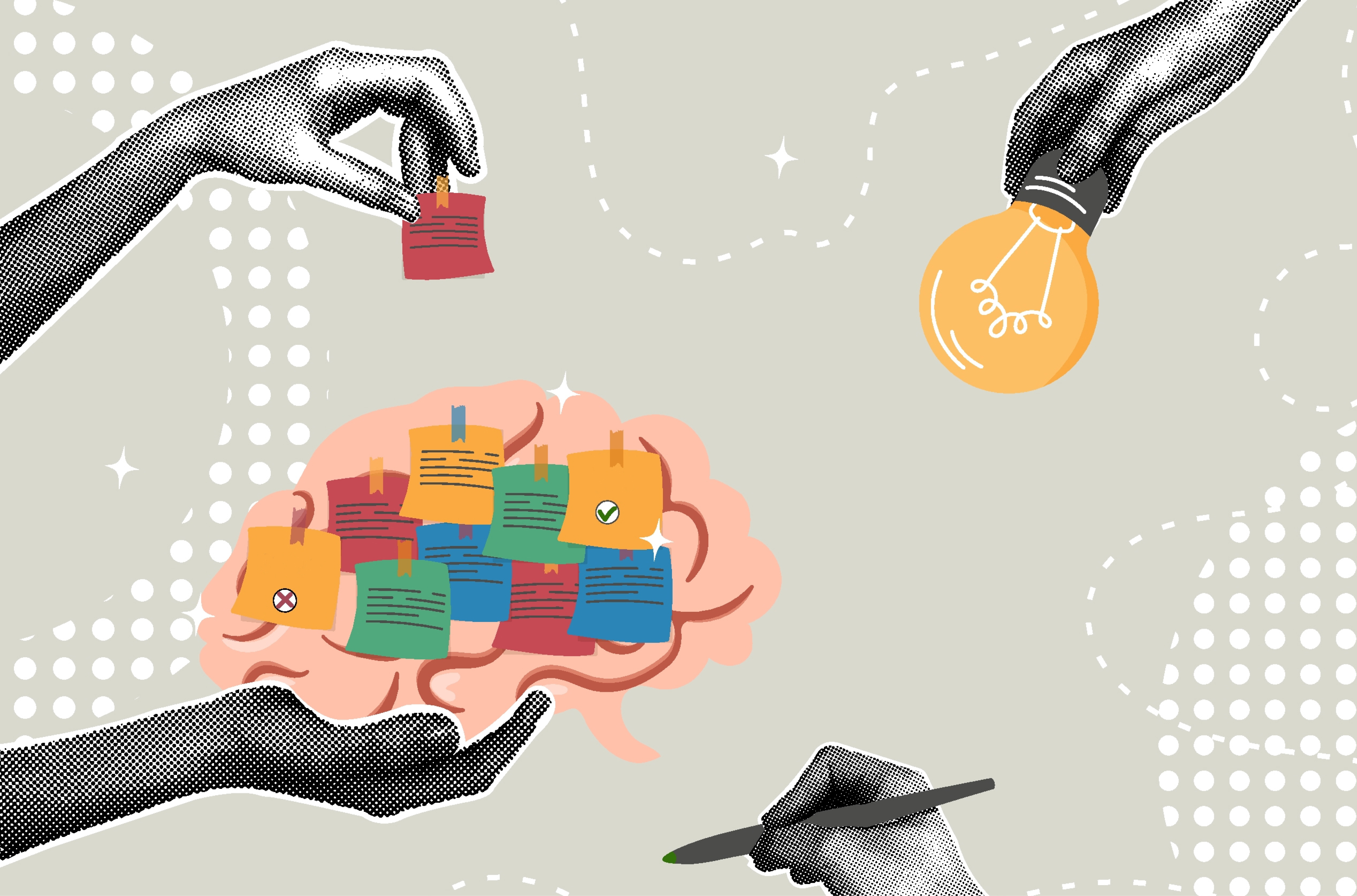Syllabus design boot camp, day 2: course learning materials
How to select course learning materials, including reading lists, that meet your learning outcomes needs while paying attention to student workloads and diversity.

When I was a new instructor, my reading lists were best described as ambitious. Working under the belief that my job was to cram as much content into students’ brains as possible, combined with a lack of confidence in myself as an instructor, I assigned my students heavy reading loads, anticipating that they would read these materials and come to class ready to pick up where the assigned authors left off.
That did not occur.
Students are, I quickly learned, rational actors, at least when it came to assigned readings. “Required” readings were read in advance by a handful of students, while others waited to see what elements I highlighted in lectures before deciding what was actually required. And the “recommended” readings? Well, that list was purely decorative.
Today is Day 2 of the syllabus design boot camp, and we are going to address your course learning materials. Rest assured that I learned from my long-ago reading list experiences!
Read Day 1: Five days to a well-designed syllabus: introducing the syllabus design boot camp
Start by revisiting your learning outcomes
Steven Covey famously argues that highly effective people “begin with the end in mind.” In that spirit, it is useful to revisit the course learning outcomes that you created on Day 1. Your course materials should tie directly to these – either by providing information for the knowledge learning outcomes or content to be engaged with for the skill/competency learning outcome. For example, if a learning outcome includes being able to “justify the use of causal arguments in social science research given the challenges of demonstrating causal relationships,” you will want to provide students with learning materials that explore causality.
Think beyond the traditional reading list
Reading materials in the form of textbooks and journal articles typically form the heart of course learning materials. There are good reasons, however, to think more broadly, For example:
- The chances are high that the textbook chapters will not tie exactly to your course learning outcomes. In this case, you can choose to not assign those chapters, bring in additional materials and/or revisit and revise your learning outcomes to include the content (or simply live with the gap). The most important point is to let your learning outcomes drive the course, rather than letting it be dictated by the textbook structure.
- Textbooks are expensive, and journal access uneven, especially for students. (An important note to anyone updating a syllabus from past years – be sure to double check that your library still has access, as university library subscriptions change over time.) If students can’t easily afford or access the materials, chances are they won’t use them. Period.
- Building in other learning sources – such as videos, recorded talks or podcasts – gives your students a change of pace. As with everything else, ensure that the materials fit your learning outcomes – not just that you find them interesting and are gambling that students might too. (For electronic learning materials, keep in mind that website links often change. For this reason, be sure to note this to students in your syllabus with something like: “If you find a link is inactive, simply search for the title on the internet. If you are unsuccessful in your internet search, email me.”)
- Guest speakers – either in person or over video – bring the power of storytelling to the classroom. You can invite a program alum to talk about their career, a scholar from another university to talk about their research area, or a practitioner to talk about new developments in the field. Guest speakers can be particularly valuable as a resource for your career skill-learning outcome. You may, for example, bring in a librarian to work with your students on internet research skills.
Assess the diversity and inclusivity of your reading list and course materials
There is growing attention to issues of representation, diversity and inclusion in assigned reading lists – and for good reason. As Schucan Bird and Lesley Pitman write, “Students view the reading list as an important instrument for learning, providing them with the ‘key’ or ‘main’ texts in the subject area. … Yet, existing research highlights that published or highly cited works do not necessarily reflect the discipline as a whole … and curricula can present a distorted view of a field with a more pronounced tendency to list particular publications, for example, by male, white scholars.”
If you are creating your reading list from scratch, deliberately seek out diverse authors. If you are updating an existing reading list, review it carefully with an eye to gender and racial diversity. Online tools can help with this. For example, Jane Lawrence Sumner’s Gender Balance Assessment Tool (GBAT) provides a rating of your reading list based on gender and, if you wish, race.
If you discover that your reading list is disproportionately white and/or male, and if you find your reading list includes no Indigenous voices, consider how you can increase the diversity. There may be discipline-specific resources online to assist with this. (I am particularly impressed with the Diversity Reading List available for philosophy instructors.) You can also reach out to colleagues at your own or other universities, review recent journals in your field or conduct good old-fashioned internet searches.
In addition to your reading list, consider the diversity and inclusivity of your other learning materials. Are the images in your slides or on your course website inclusive? Can you include videos, podcast interviews or other learning materials that feature diverse scholars? If your class will include guest speakers, consider the diversity of those speakers.
Model the bibliography and acknowledgement practices you want to see from your students
Your syllabus is an opportunity to model the professionalism that you wish to see from your students. This applies to your reading and materials lists. If you expect students to use Chicago style, and to do so consistently, be sure to model this in your syllabus.
Similarly, if you expect students to credit the unpublished work of others, model this as well. I like to include an “acknowledgements” section in my syllabus as appropriate. Here are two examples from my recent syllabi that might give you ideas for your own:
Acknowledgements. I would like to thank Dr. Adam Chapnick, Canadian Forces College, for sharing his DS 572 course materials to inform this course design. Some of the selected readings were inspired by other political science research methods course syllabi available online.
Note: This activity is adapted from an assignment by Dr. Thomas Leeper, presented at https://thomasleeper.com/designcourse/Assignments/ProblemSet1.html . I thank Dr. Leeper for the inspiration for this assignment
Finally, consider as well how your bibliography reveals or hides diversity. The Diversity Reading List argues, “It is vital that the syllabus makes the authors’ backgrounds salient to the students – after all, challenging the stereotype can only happen if the students are aware that the authors they read are not stereotypical.” This includes providing the full name – and not abbreviated initials – for all authors.
Consider the workload per week
Your course learning materials are only part of the workload your students are managing. According to the University of Waterloo, “Undergraduate students should spend approximately 8-10 hours of total effort per week on each .5 credit course: this includes listening to lectures, doing reading and assignments, and studying for tests.” This is a good guideline to start from.
You can use an online workload calculator to assess the time students will need for your learning materials. If the workload is heavy, consider how you can adjust this while achieving the learning outcomes.
Your syllabus design boot camp homework
Here is your homework for today:
- Revisit your learning outcomes and identify learning materials that tie to these outcomes (estimated time: 10-60 minutes, depending on the number of new items you must select).
- Assess the workload and the diversity of your learning materials (estimated time: 15-30 minutes).
- Review your bibliography to ensure it reflects the style and attention to detail that you expect to see from your students (estimated time: five to 15 minutes).
- Add an acknowledgements section if appropriate (estimated time: five minutes).
In my next column, I will cover assignments.
Continuing the #SkillsAgenda conversation
How do you assess the workload and diversity in your learning materials? Please let me know by connecting with me on Twitter at @loleen_berdahl and sharing your thoughts using the hashtag #SkillsAgenda.
I look forward to hearing from you. Until next time, stay well, my colleagues.
Featured Jobs
- Canadian Politics - Assistant ProfessorUniversity of Toronto
- Education - Assistant Professor (Distance Education)University of Toronto
- Canada Excellence Research Chair in Forest Biodiversity Conservation (Full Professor)University of New Brunswick
- Psychology - Assistant Professor (Clinical Psychology)Queen's University
- Canada Excellence Research Chair in Energy TransitionsUniversité du Québec à Trois-Rivières (UQTR)














Post a comment
University Affairs moderates all comments according to the following guidelines. If approved, comments generally appear within one business day. We may republish particularly insightful remarks in our print edition or elsewhere.